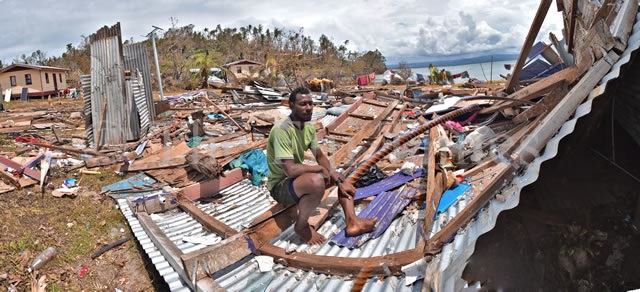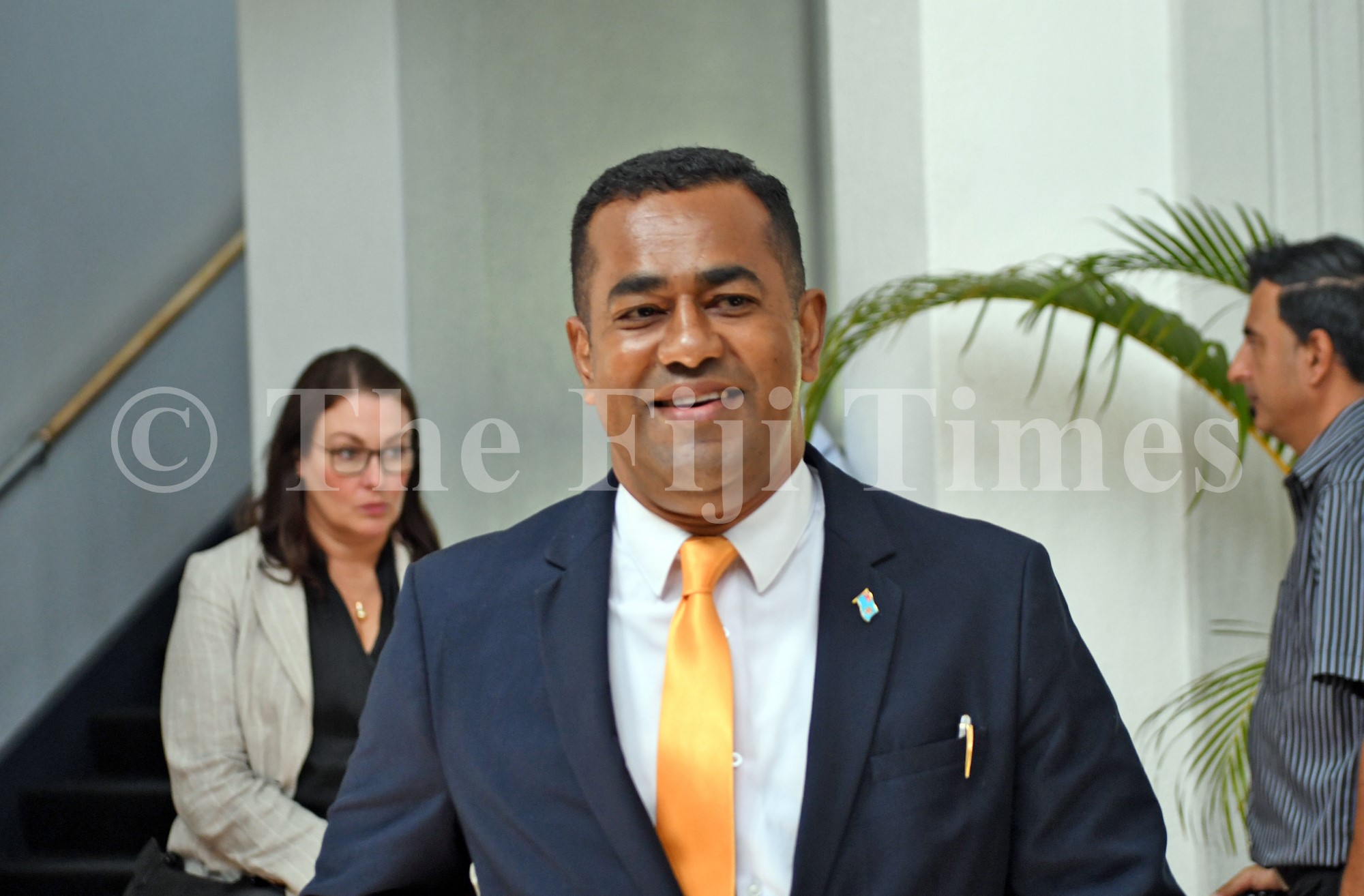FOR the first time in Fiji’s history our national debt level is approaching the level of our GDP.
It is time to ask where the borrowed billions are going.
It had become quite clear, even before the COVID pandemic struck, that Government finances were in a precarious state, business confidence had fallen to record lows and banks had tightened up on credit.
Government revenues were down – substantially below budget – creating large fiscal deficits which were funded by both internal and external borrowings.
There were no signs of recovery from this downward spiral as our exports had plunged, tourism earnings had peaked and investment levels remained stagnant.
The shock came when the 2019/20 budget was slashed by $1.1 billion amid warnings from the international financial institutions that our debt level had to be contained and unnecessary spending curtailed to reduce fiscal deficits.
The chickens had come home to roost after four years of financial and economic mismanagement at the hands of the Economy Minister Aiyaz Sayed-Khaiyum who took over the Treasury after the 2014 General Elections.
Even with these austerity measures, it was evident that the situation had deteriorated to a point where our economy and Government finances would need to be supported by further borrowings, mostly external, to avoid a collapse.
Mr Sayed-Khaiyum was now forced to mount the debt tiger as he had failed to find an alternative.
World Bank Group loan
In an article following the tabling of the 2020/21 budget, I had reported that the minister had announced a staggering $1.4b in new loans.
This raised the nation’s total debt level to $8.1 billion taking it to a mammoth 83.4 percent of the GDP.
This compared with a prebudget debt situation of $6.7b which was 65.6 per cent of the GDP – worrying even then.
If the $1.4b in new loans was not bad enough, the minister has since doubled this by adding a further $1.4b over the past three months.
I refer to the $1.2b funding negotiated with the World Bank Group in January this year.
Of this, $429m is from the World Bank and $600m plus from the International Finance Corporation (IFC).
These funds will be disbursed over a four year period, with repayment spread more than 40 years at a rate of 0.75 per cent and a 10-year grace period.
When questioned in Parliament, the minister proudly proclaimed: “… so it’s less than 1 per cent. You can imagine a period of 40 years obviously, may be in fact paying less than what you borrowed”.
Whatever that means – because the principal has to be paid back with interest, regardless of the time frame.
Almost simultaneously, an emergency loan agreement for $200m was signed last week with the Japanese Government.
National debt exceeds $10b
These two additional borrowings will eventually bring Fiji’s total debt exposure to a whopping $10.35b – 119 per cent of the national GDP of $9bn which had contracted by $2b since the last budget announcement (so Minister
Sayed-Khaiyum had said in Parliament on February 10, 2021).
All these new borrowings – $2.8bn since July 2020 when the 2020/21 budget was tabled – are ostensibly to meet the economic and social crisis created by the COVID pandemic, the impact of the two cyclones Harold and Yasa and climate change.
In a statement issued from Washington on January 21, 2021, announcing the funding agreement the World Bank said: “Central to the framework is a focus on supporting Fiji’s recovery from the economic and social impacts of COVID-19, as well as severe Tropical Cyclones Harold and Yasa; all three events having hit Fiji in 2020, in addition to the ongoing impacts of climate change.
“At its core, the framework supports Fiji’s forward planning to boost its economic recovery from COVID-19 and further strengthens Fiji’s resilience to future climatic and public health emergencies.”
The World Bank went on to say: that this “framework” was closely aligned with Fiji’s National Development Plan “and was developed in close consultation with government, civil society and the private sector”.
Interesting. Fiji’s so-called National Development
Plan has never been debated in Parliament or published for public consumption.
Ironically, it was launched at a private ceremony somewhere in Turkey during a COP23 meeting.
As for the World Bank’s consultation with civil society and the private sector – we are not aware of any such consultation.
Political parties, trade unions or farmers organisations were certainly not asked to give their views.
Who benefits?
In the same statement, IFC’s regional resident representative, Deva de Silva said: “We are looking to create bridges between the public and private sectors to develop large scale initiatives, worth more than $US300 million (603.56m) and remain committed to supporting the government, including in the areas of tourism, financial systems reform, healthcare, affordable housing, renewable energy and improving gender equality”.
This brings me to my real concerns about these loans, $2.8b borrowed in less than a year.
Where is the money going?
I certainly don’t see any specific plans for development in the areas being outlined.
Nor has the nation been informed of any “forward strategies” by the minister to rebuild the economy or create resilience to cyclones and climate change.
Given the size of the loan, his statement to Parliament was extremely short and uninformative.
As a case in point, in December 2019, Fiji negotiated a $US50m (F$108m) stand-by loan with the Japanese Government to provide relief and rehabilitation in the case of natural disasters.
Since then, we have been hit by three severe cyclones: Harold, Yasa and Ana. Hardest hit were the people of Vanua Levu in the case of Yasa and Ana, and Kadavu and the Lau islands in the case of Harold.
According to The Fiji Times of February 25, the $108m stand-by loan has been almost fully drawn on by the Government: a drawdown of $45m for Cyclone Harold and $55m for Cyclone Yasa.
If that is the case, who has benefited from it?
The people of Labasa, still reeling from the devastating impact of STC Yasa on their homes, crops and personal belongings, are crying out for Government assistance.
Apart from some meagre rations to selected areas, there has been virtually no government assistance.
There has certainly been no relief package announced for the victims of either TC Harold or Yasa except for a grossly inadequate $4m crop rehabilitation package for the sugar industry in the North.
Loans not project specific
I believe that much of the funding obtained through these loans are channeled to meet our cash-strapped Government’s operational expenditure and for debt repayments.
The IFC loan funds, for instance, are supposed to strengthen public/private partnership in the areas of public housing, health care, tourism etc.
One may well ask whether it will end up paying for the upgrade of the Lautoka Hospital to accommodate the partnership agreement between Aspen Medical and FNPF – something which has remained on the negotiating table for the past two years or so.
Not to mention the new $30m Ba Hospital, which has remained shut since its completion three years ago.
We understand the revised cost of the Lautoka Hospital project has escalated substantially from the original $150m with the change of project design and managers.
On the tourism front, the loan funds may well be spent on bailing out Fiji Airways which has amassed huge debts since the closure of international borders.
As for public housing, we hope it will not go the way of the Tacirua Housing development funded by Chinese loans, where the beneficiaries were not the low income earners but speculators who profited from the resale of the lots.
One must remember that these are not project specific but policy-based loans with a great deal of flexibility about how the funds are used.
All said, it is quite disconcerting to see that these huge borrowings are decided upon without full disclosure to Parliament – and to the people who will eventually end up repaying them.
- MAHENDRA P. CHAUDHRY is a former prime minister of Fiji and the leader of the Fiji Labour Party. The views expressed are his own and do not necessarily reflect the views of this newspaper.





